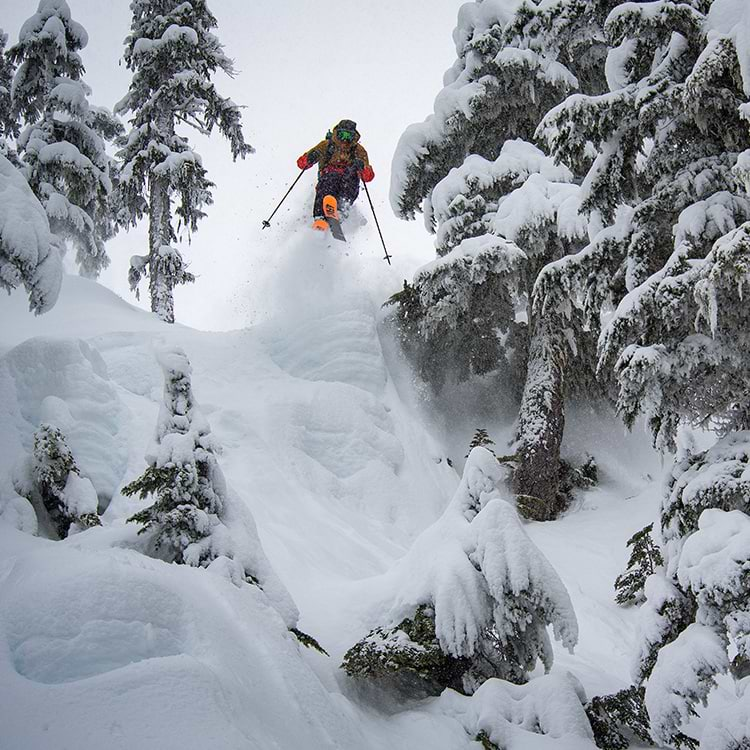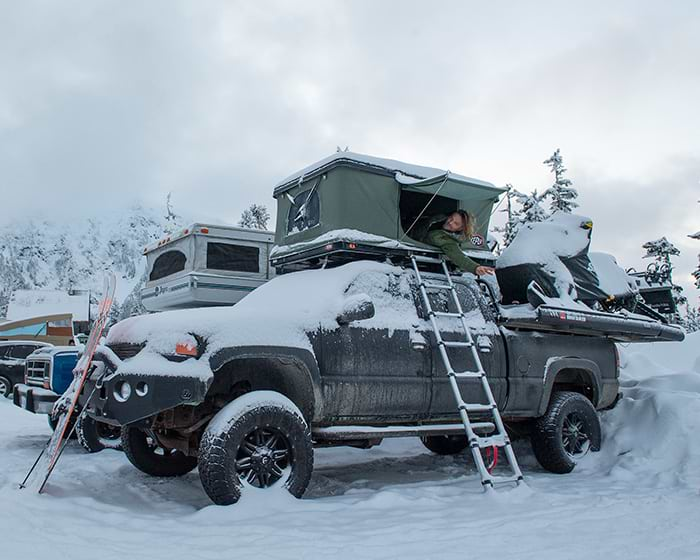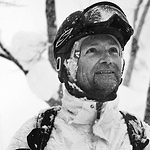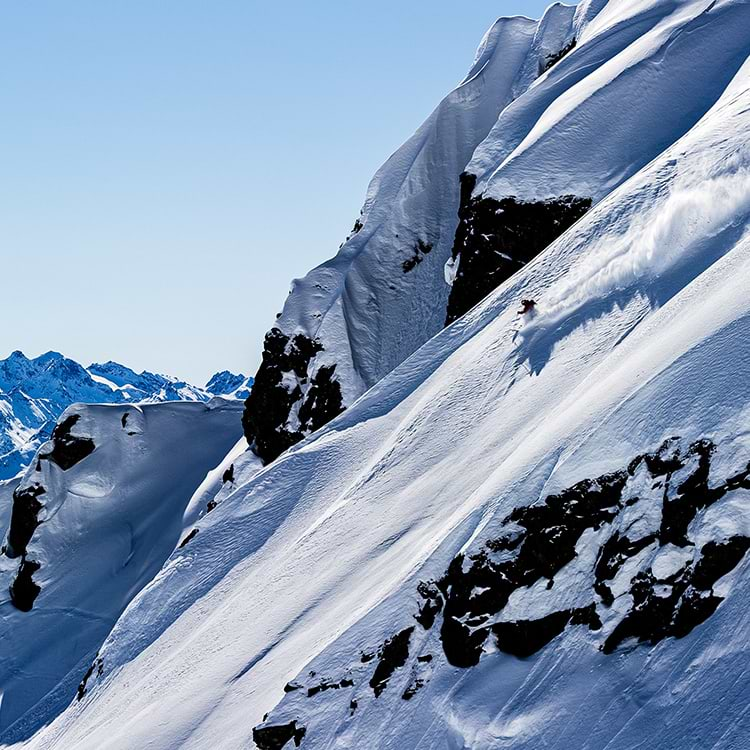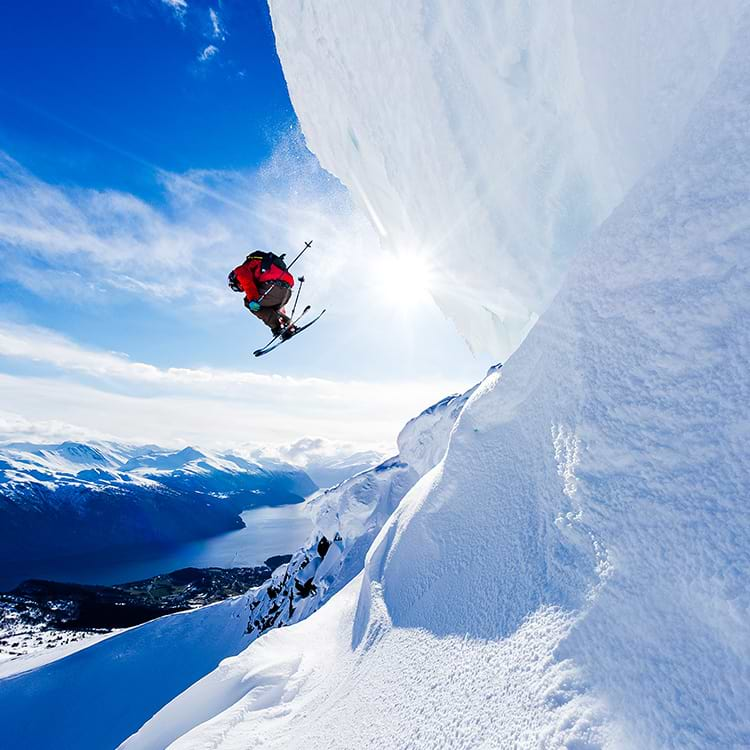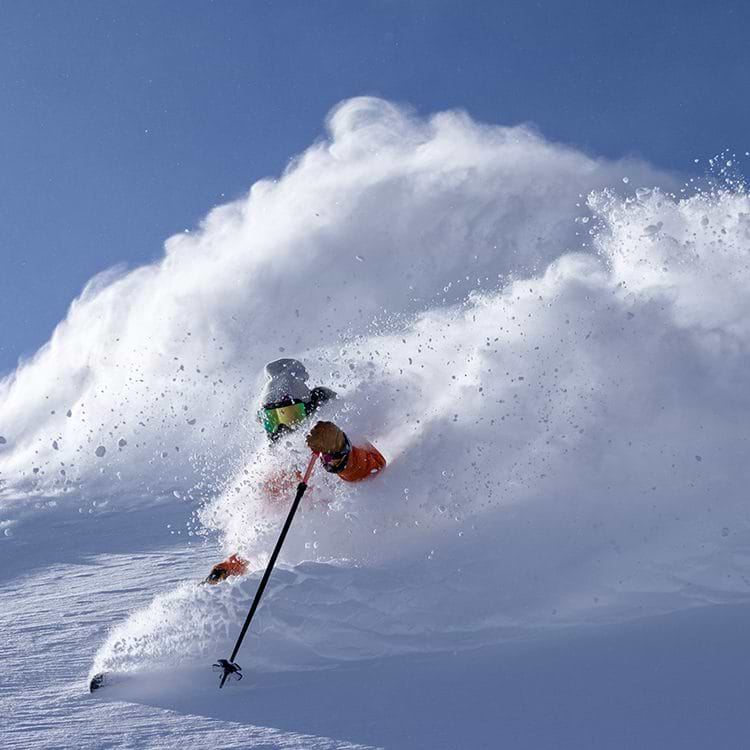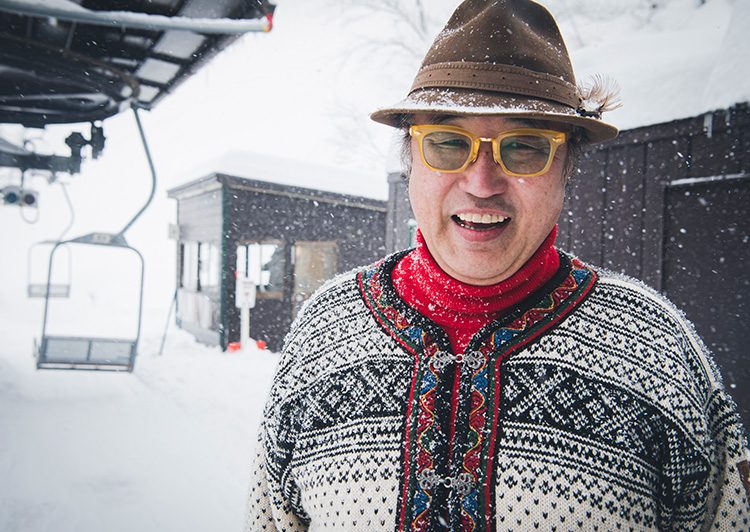Snow fell in a dense curtain, the kind that obliterated any view as we ascended in the cable car. Exiting the lift on a windswept alpine plateau, we beat the visibility challenge by heading into the trees, slicing over an open dome that tipped steeply into a pine and larch forest. As snow broke around our waists, the slope briefly opened onto a meadow before the forest closed back in. The whole sequence repeated — like skiing through a series of hourglasses, where each pinch brought momentary relief from relentless face shots.
However, this is not a spy movie; it’s real life, featured in MSP’s short ski film “Frozen in Time — The Greatest Ski Area You Have Never Heard Of. “ There is no better summary of Mount Cain, a small ski hill far removed from anywhere you’ve ever heard of on northern Vancouver Island. The fact that this location remains off the radar becomes immediately clear when you see the parking lot filled with a rabbit-warren village of RVs buried in snow, with narrow paths shoveled between them. Fire rings and chairs surround energetic dogs, along with craggy-faced characters. Moreover, parking is free.
Operated by the local non-profit Mount Cain Alpine Park Society (MCAPS), Mount Cain has evolved over the years from a small ski club into a unique experience for adventurous skiers, snowboarders, and backcountry enthusiasts who make the effort to visit. Run by a dedicated team of staff and volunteers, it has a welcoming, tight-knit community feel, is open only on weekends and select holidays, and occupies a natural powder basin that receives an average of 15 meters of snowfall from Pacific storms each year. It stands out among coastal ski areas in Washington, B.C., and Alaska, with the highest base area at 3,904 feet (1,190 meters) and a peak elevation just shy of 6,000 feet, second only to Whistler. While skier visits have risen over the past few decades, they still average less than 200 daily. The mountain’s 1,411-foot vertical drop and 21 runs are serviced by two T-bars and a beginner’s handle tow. Most lower runs are regularly groomed, while many accessed from the upper T-bar remain au naturel.
Mount Cain is located within the territory of the Namgis First Nation, in a mountainous region known as Papikalan in the Kwak’wala language, meaning “place of marmots. “ The Vancouver Island marmot, an endangered species, thrives in high-alpine terrain, which it shares with Cain’s dedicated skiers. Despite the absence of lift lines, these skiers spend most of their time in this area, whether accessing the remarkable in-bounds tree skiing through old-growth forests or the easily reachable backcountry in two alpine bowls filled with chutes, cliff drops, and pillow lines. If you are willing to tour a short distance above the upper T-bar to a popular lookout, you will discover a backside brimming with big-mountain terrain described as “insane. ” Need we say more?
The non-profit organization takes its role in maintaining a viable ski community for northern Vancouver Island seriously, providing jobs for some and affordable, sustainable recreation for all. A great deal of effort goes into keeping the old equipment in working order (hence the time-warp vibe), replacing it only when absolutely necessary. Conditions permitting, the season runs from early December to early April. While our warming climate occasionally affects us (the 2023-24 season was remarkably “short and strange,” with the mountain fully operational for only 22 days), optimism never wavers, and end-of-season parking lot bonfires encourage attendees to burn something as a sacrifice to Ullr for the following season.
To reach Mount Cain from Vancouver, fly to either Nanaimo or Campbell River and continue by car. Alternatively, take a ferry from the mainland and drive north on the island. From Nanaimo, the most common starting point, it’s about three hours to the Mount Cain turnoff on Hwy 19, followed by another 30 minutes on a gravel road. The website warns visitors traveling from the south to avoid using Google Maps, as these can invariably lead to getting lost. Additional instructions state that tire chains are mandatory (you aren’t allowed to proceed without them) and to “Bring a shovel — you may need to dig your car out.” Bring your own winterized campervan and join the village scene in the parking lot, or plan to stay in one of the basic cabins or the rustic hostel. Don’t expect restaurants, groceries, or a karaoke bar.
Of course, there’s no cell phone service, but this might be by design: if you’re not already there on a big powder day, no one can call to spread the word.

